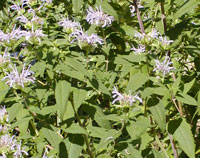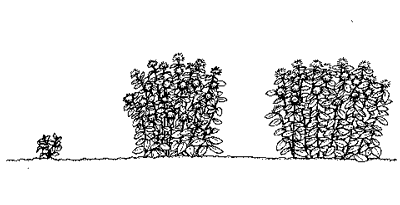 |
| Bob Lollo © |
Beebalm (Monarda didyma) is a native American perennial mint that was introduced to Americans by the Indians. They showed early settlers in upstate New York how to use its leaves to make a refreshing tea. Also known as Bergamot or Oswego Tea, beebalm is easy to grow, adaptable, striking in appearance and useful. Beebalms are fairly tolerant of cold and will grow as far north as the Great Lakes region and into southern New England (zone 4). They are cold hardy any place where winter temperatures rarely dip lower than -20°F. They are short-lived where winters are warm and summers hot, so they are not suitable for the tropical south (zone 10).
 |
Size: Beebalms grow to from 2 to 4 feet tall. They spread rapidly into dense clumps by means of shallow creeping roots, or stolons. In three years a plant is likely to be 2 to 3 feet wide.
Foliage: Beebalms have rough-textured, pointed leaves arranged in pairs opposite each other along their square stems. A medium green and slightly fuzzy underneath, leaves are from 3 to 6 inches long. They smell strongly of mint when crushed.
Flowers: Their large, rounded, shaggy clusters of tubular 1 inch long flowers appear at the tops of beebalm's tall stems, resembling mopheads. The flowers are most commonly scarlet red, or shades of rose, pink or lavender. They bloom from late June to August.

